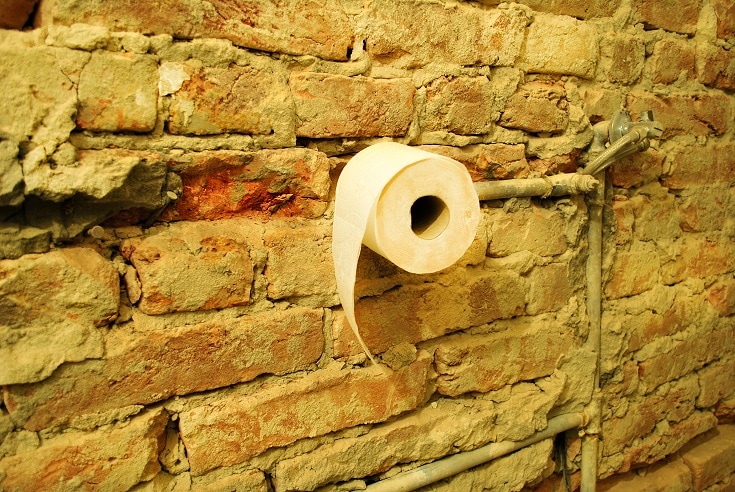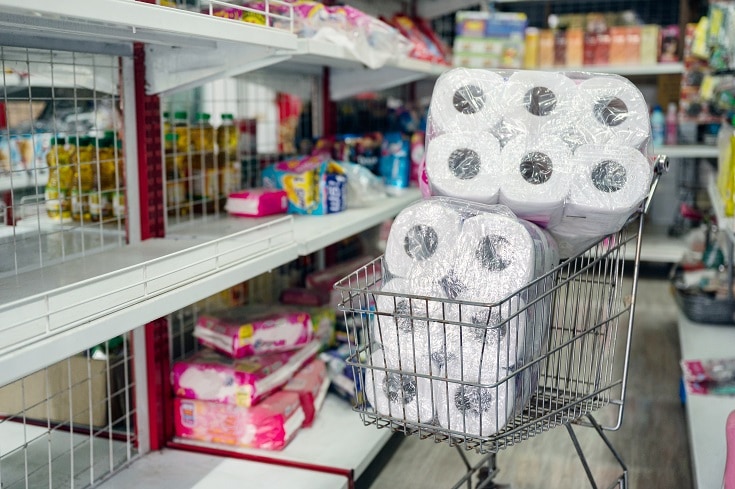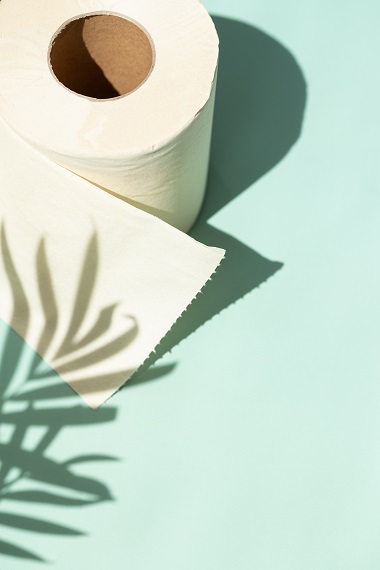8 Different Types of Toilet Paper: What Are The Differences?
-
Pete Ortiz
- Last updated:

Toilet paper has gone through several evolutionary phases to become the product that it is today. Over that period, it went from a “one-type-suits-all” item to a vast array of products that fulfill different consumer preferences.
For many people, it is the brand that matters more than the type of toilet paper. However, it is important to know all the available options.
Without further ado, let us get into it.
 History of Toilet Paper
History of Toilet Paper
The earliest documented use of toilet paper was in China, back in the 6th-century A.D. The Chinese had already been using paper since the 2nd century A.D. for padding and wrapping purposes. It did not take long before they figured out that they could also use it for wiping, and they did so for centuries before they started manufacturing toilet paper rolls in what is currently known as the Zhejiang Province.
In other parts of the world, however, most people used materials such as wood shavings, grass, leaves, and fruit skins to wipe, while the wealthy utilized wool and hemp until the 18th century. This was when paper use became widespread in most Western countries, even among commoners.
In the United States, toilet paper use properly began in 1857, thanks to Joseph Gayetty, who was the entrepreneur that introduced toilet paper rolls to the U.S. market.

Factors to Consider When Buying Toilet Paper
Since its inception, this product has remained largely the same: a roll of soft paper. However, thanks to several modifications, there is now a variety of toilet paper sub-types, each having a unique set of attributes. As such, what you seek from toilet paper should determine what you use.
Consider the following factors when looking for toilet paper.
Strength
Different types of toilet paper have different levels of strength, which is the measure of a toilet paper’s resistance to puncturing. You can determine the strength of a toilet paper by simply touching or pressing it. Obviously, you want one that does not puncture easily.
Number of Plies
Plies refer to the separate layers of paper in a sheet of toilet paper. These are what determine the thickness of a toilet paper. Some toilet papers have only one-ply, while others can have up to six. Most, however, have two plies. The more plies a toilet paper has, the stronger it is.
Chlorine Content
In the past, most toilet papers contained a significant amount of chlorine in their composition, as it was the primary agent used to bleach paper. However, studies revealed that chlorine had a detrimental effect on the environment, as it caused severe pollution in both air and water. Additionally, chlorine has damaging effects on the skin.

Even though the practice of using chlorine in the creation of toilet paper is discouraged, some manufacturers still do it. Therefore, ensure that a toilet paper is chlorine-free before purchasing.
Softness
Toilet papers can be soft, silky, or rough to touch. To make sure that a toilet paper fulfills your preferences, first rub it against your skin before you buy it.
Eco-friendliness
In a bid to conserve the environment, more and more toilet paper companies are producing environmentally-friendly toilet paper. This type of toilet paper is made from recycled materials, thereby reducing the impact that our habits have on the environment.
The 8 Types of Toilet Paper
The following are the most common types of toilet papers on the market today:
1. One-Ply Toilet Paper

As mentioned, plies are the layers of paper used to make a sheet of toilet paper. One-ply toilet paper, therefore, has only one layer of paper in its sheets. Initially, all toilet papers came as one-ply; however, as people started demanding stronger toilet papers, manufacturers had to increase the number of plies.
One-ply toilet papers are, on average, much cheaper than multi-ply toilet papers. Additionally, they disintegrate faster, which makes them less likely to clog your toilet and plumbing.
- Cheap
- Reduce the risk of clogging
- Susceptible to puncturing
2. Two-Ply Toilet Paper
As the name suggests, this a toilet paper that has two layers of paper making up its sheets. Two-ply toilet papers came about when consumers insisted on getting thicker toilet papers.
While two-ply toilet papers are more robust than one-ply, they have drawbacks such as being costlier, as well as increasing the risk of clogging in your toilet, plumbing, or septic unit.
- Thicker and stronger than one-ply
- More comfortable
- Costlier than one-ply papers
3. Three-Ply Toilet Paper

These toilet papers have three layers making up their sheets, which makes them incredibly thick, as well as better absorbents than the two-ply papers.
A three-ply toilet paper is also softer and sturdier than both the two- and one-ply papers
However, these benefits come at a cost (pun intended). Three-ply toilet papers are much more expensive than one-ply and two-ply.
Additionally, due to using so many layers of paper, three-ply toilet paper runs a greater risk of clogging your toilet, in addition to being less environmentally friendly.
- Thick
- Soft
- Durable
- Costly
- High risk of clogging your toilet
4. Bamboo Toilet Paper

One of the ways that you could aid in environmental conservation efforts is by using bamboo toilet paper. Unlike conventional toilet paper that is made from trees, bamboo toilet paper is made from — you guessed it, bamboo!
Bamboo is a type of grass that has a rapid growth rate. It can go from a seed to a fully mature plant in just a few months. As such, this makes it the ideal source of paper, considering that trees take several years to mature.
Bamboo tissue paper is also stronger than average T.P.s while being softer and silkier. The issue with bamboo toilet paper, however, is that it is much more expensive than other types of tissue paper.
We also recommend reading this article from Ecoy about how to make your bathroom more eco-friendly.
- Comfortable
- Strong
- Environmentally friendly
- Pricey
5. Luxury Toilet Paper

Luxury tissue paper comes with all the bells and whistles, such as scented, lotioned, and quilted.
Luxury T.P.s range from two-ply to four-ply. They are also incredibly soft while being thick and durable, which has made them a hit in American homes.
Nonetheless, despite all the fancy additions, it has a massive price tag that just might not be worth it, though you should consider trying it out.
- Extremely comfortable
- Thick
- Durable
- Expensive
6. Brown Toilet Paper

This is a type of toilet tissue made of unbleached paper, which makes it one of the most environmentally-friendly options on this list. This T.P. gets its name from its brown color, which is the result of it not undergoing the bleaching process.
Nonetheless, despite its contribution to a greener earth, brown toilet paper can be quite rough compared to the average toilet tissue.
- Environmentally friendly
- Strong
- Rough
7. Recycled Toilet Paper

This is a type of toilet paper made from recycled products, thereby making it the most environmentally-friendly type of toilet tissue. It reduces our carbon footprint by reducing the number of trees that we cut down to make paper, as well as the amount of energy used to make that paper.
This tissue paper also does not use chlorine in the bleaching process, thereby adding to environmental conservation efforts.
The drawback of using recycled toilet paper is that it is not as soft as other types of toilet papers. Additionally, it is also quite thin. However, people who use it say that it does the job well enough.
- Most environmentally-friendly toilet paper
- A bit rough
8. Colored Toilet Paper

Colored toilet papers were all the rage in the past, with people even using them as part of bathroom décor. However, when studies revealed that the dyes used to make colored toilet papers were harmful to the skin, these toilet papers suffered a steep decline in popularity. Moreover, they were also quite expensive to produce due to the extra dye costs.
Nonetheless, colored toilet papers have been making a steady comeback in recent years, with celebs such as Kris Jenner and Beyoncé being cited as fans of colored tissue paper. The company responsible for this resurgence is Renovo, and it claims that all their colored tissue papers have undergone dermatological and gynecological tests for safety.
- Aesthetically pleasing
- Pricey
- Potential safety issues
Get the Right Kind of Toilet Paper
The right type of toilet paper is subjective to an individual; it all depends on your preferences. However, you should consider the environmentally friendly tissues, as they contribute to a greater cause.
Which one is the best type of toilet paper, according to you? Please let us know!
Featured Image Credit: NewFabrika, Shutterstock
Contents

 History of Toilet Paper
History of Toilet Paper
